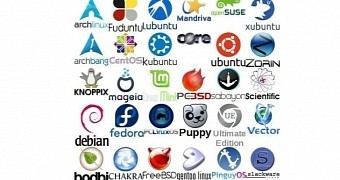One of the things that some people say about the Linux platform is that it's fragmented, just like Android. The truth is that fragmentation doesn't really apply to the Linux platform, and the fact that there are too many distros to count is actually a good thing.
Android is a broken system that works. If we take a look at the Android slice right now, we'll see that most people are still using KitKat 4.4, about 40%, and about 15% have just moved on to Lollipop 5.0. The rest up to 100% are split in even older versions of the operating system.
This might not be a problem in a world without security concerns, but the truth is that people hang on to their phone for a longer period of times than the support offered for them. With the exceptions of the Nexus phones which are maintained directly by Google and which have a minuscule part of the market, the rest of the devices rely on upgrades that need to be cleared and modified by carriers, which can take months.
Also, cheaper phones or tablets won't even get that kind of attention. This means that some vulnerability found in Android, most people won't even get an update for it. It also means that the Android platform, in its entirety, is the most exposed. That is fragmentation.
Linux is not fragmented; it's united
Using the term fragmented to describe Linux is not correct. If anything, Linux is one of the most cohesive platforms available right now and that's actually really easy to prove. The biggest problem Linux has seems to be the large number of distributions available, but that's only an illusion.
For the most part, there are only a few big ones, and the rest are pretty much filling various niches. Some of the new distros become important in time, and some of the older ones might even fade away. They all share the same core, the Linux kernel.
This is the backbone of the operating system and its single piece of code. The illusion of fragmentation is also given by the many desktop environments and window managers available right now, but that's also related to user preferences, more than anything else.
The glue that keeps all the Linux platform together is something that prevents the very idea of fragmentation, the GPL license. There are many stipulations in the GPL, but one stands above the others and gives Linux its power. The code is free to download, use, modify, and even ship in any kind of commercial enterprise, but any modifications made to the original code must be made available to everyone.
This means that everyone (for the most part, it's not a perfect system) has access to the same code and to all the improvements that are made by a huge number of developers. That doesn't apply only to the Linux kernel, but to all of the other components.
So you see, Linux is not fragmented at all. It's a solid block of code that moves in all directions and a single direction at the same time. This is the reason for its security and the huge diversity it is capable of.

 14 DAY TRIAL //
14 DAY TRIAL //